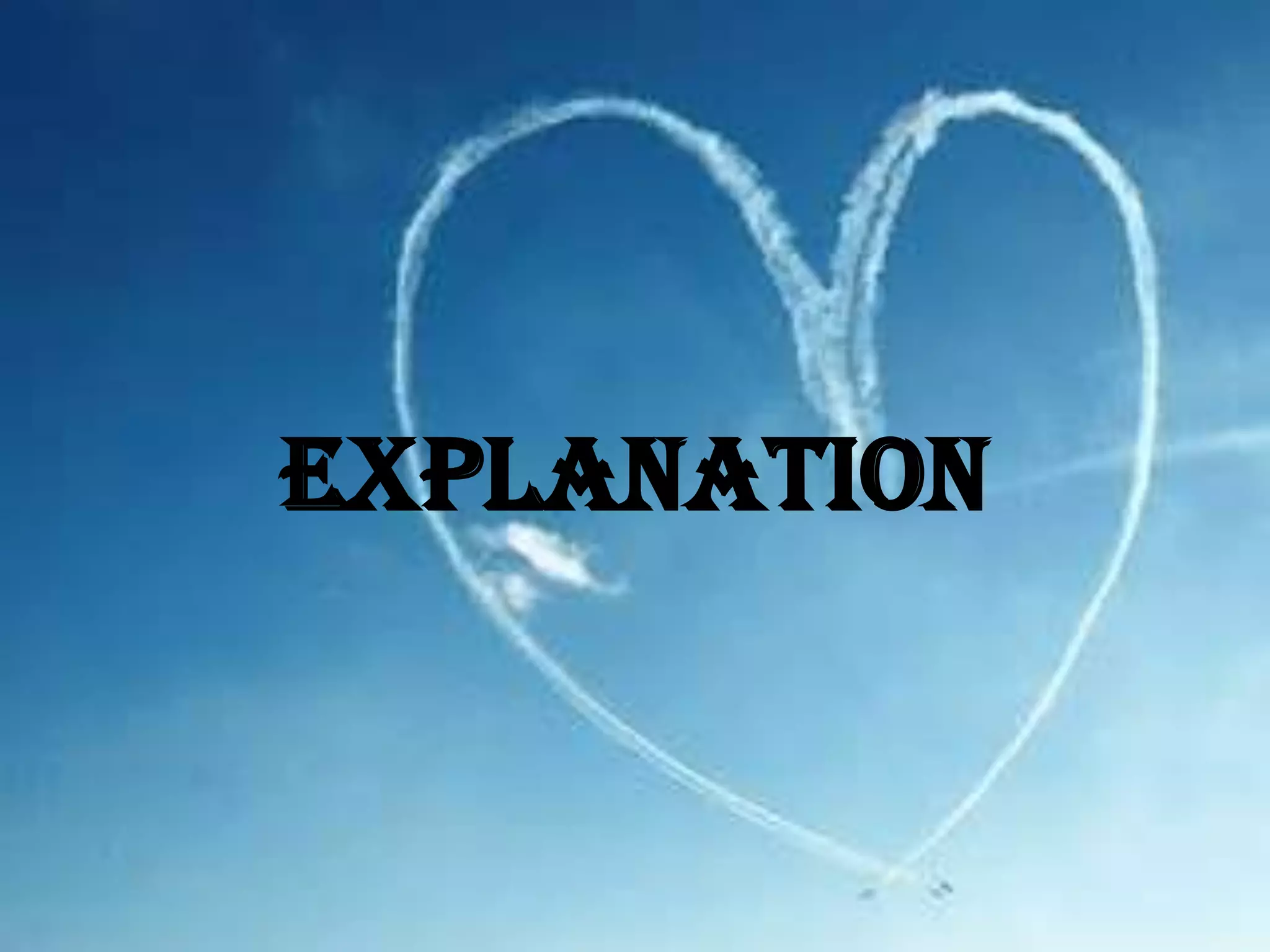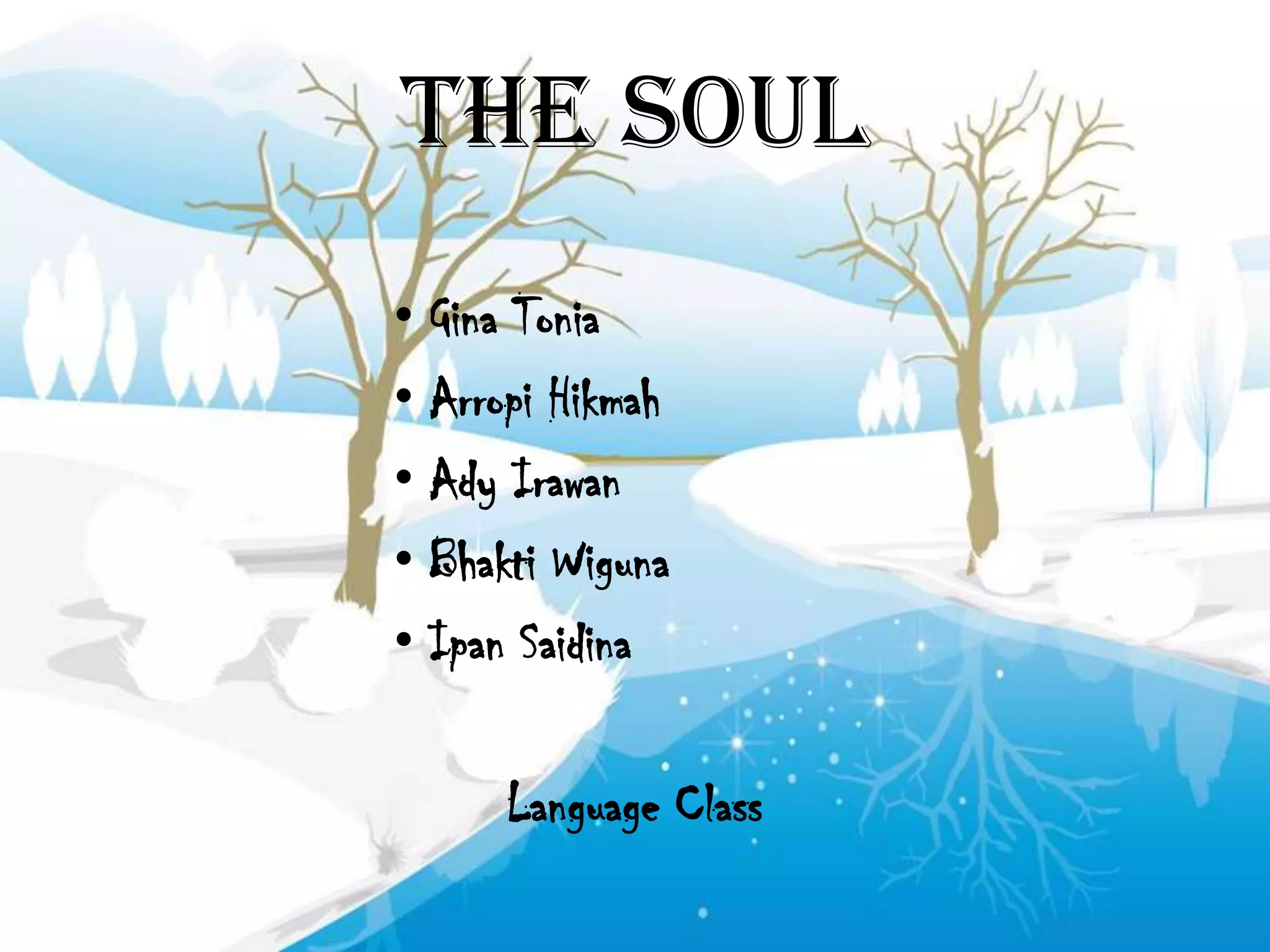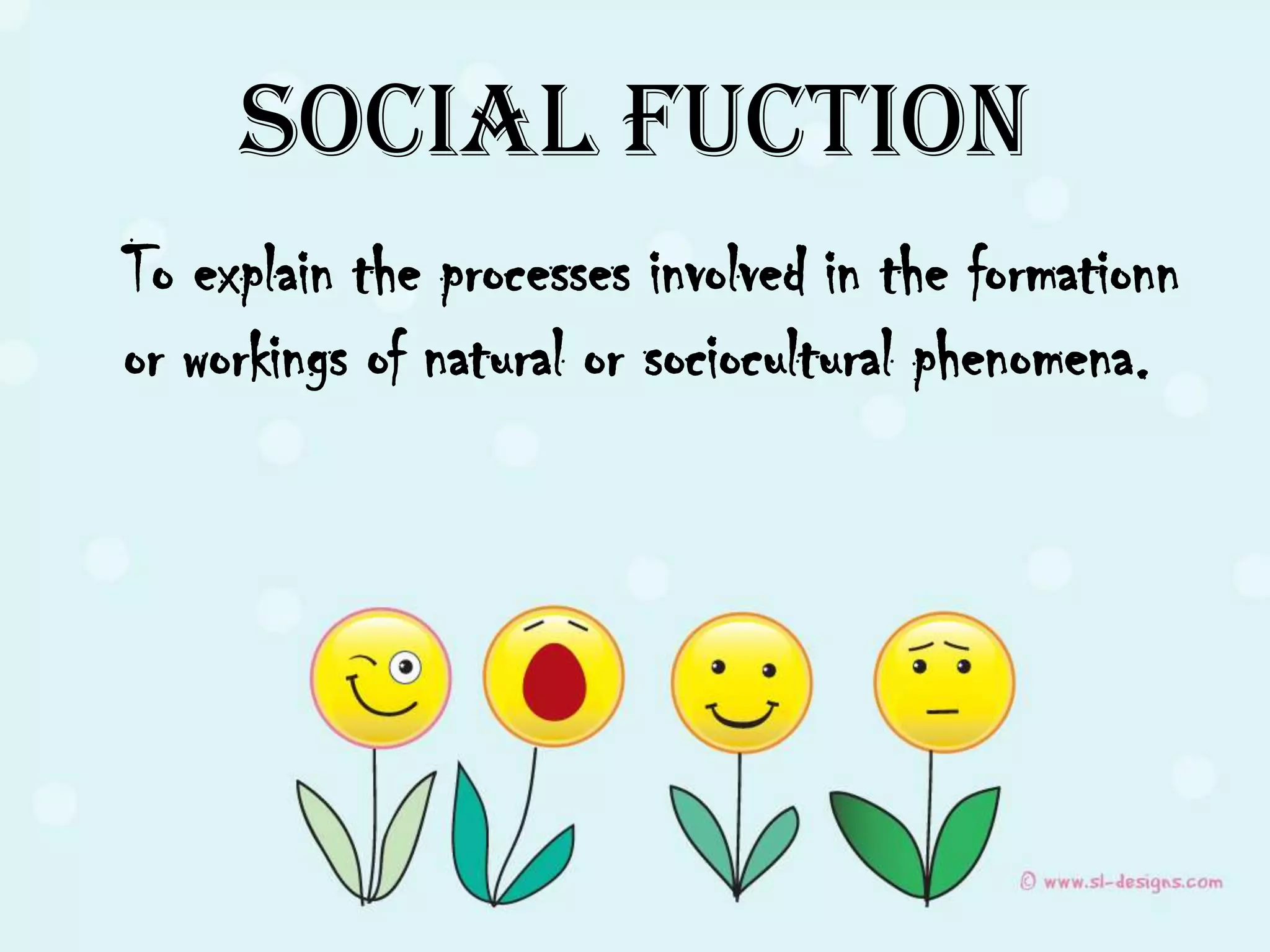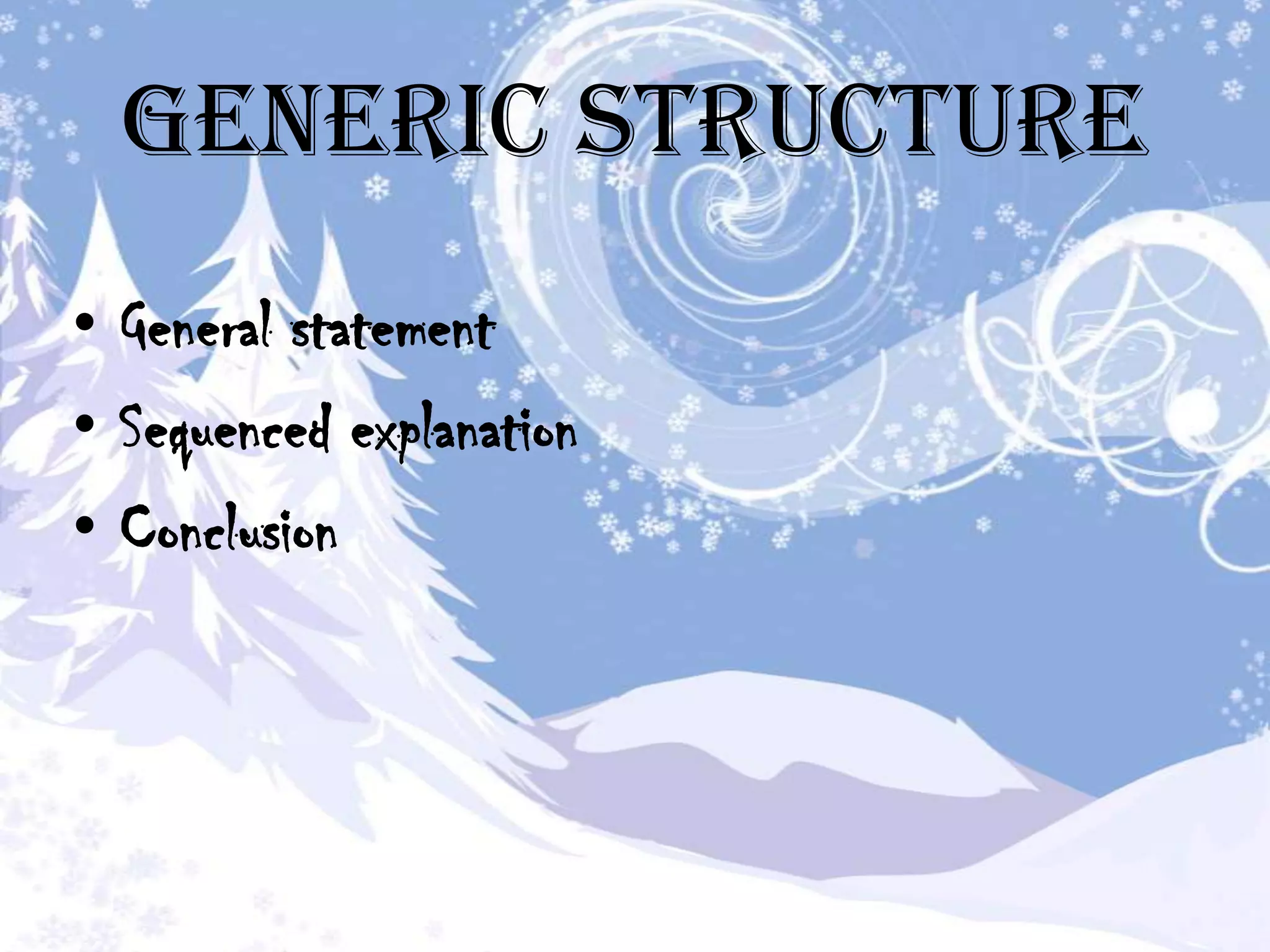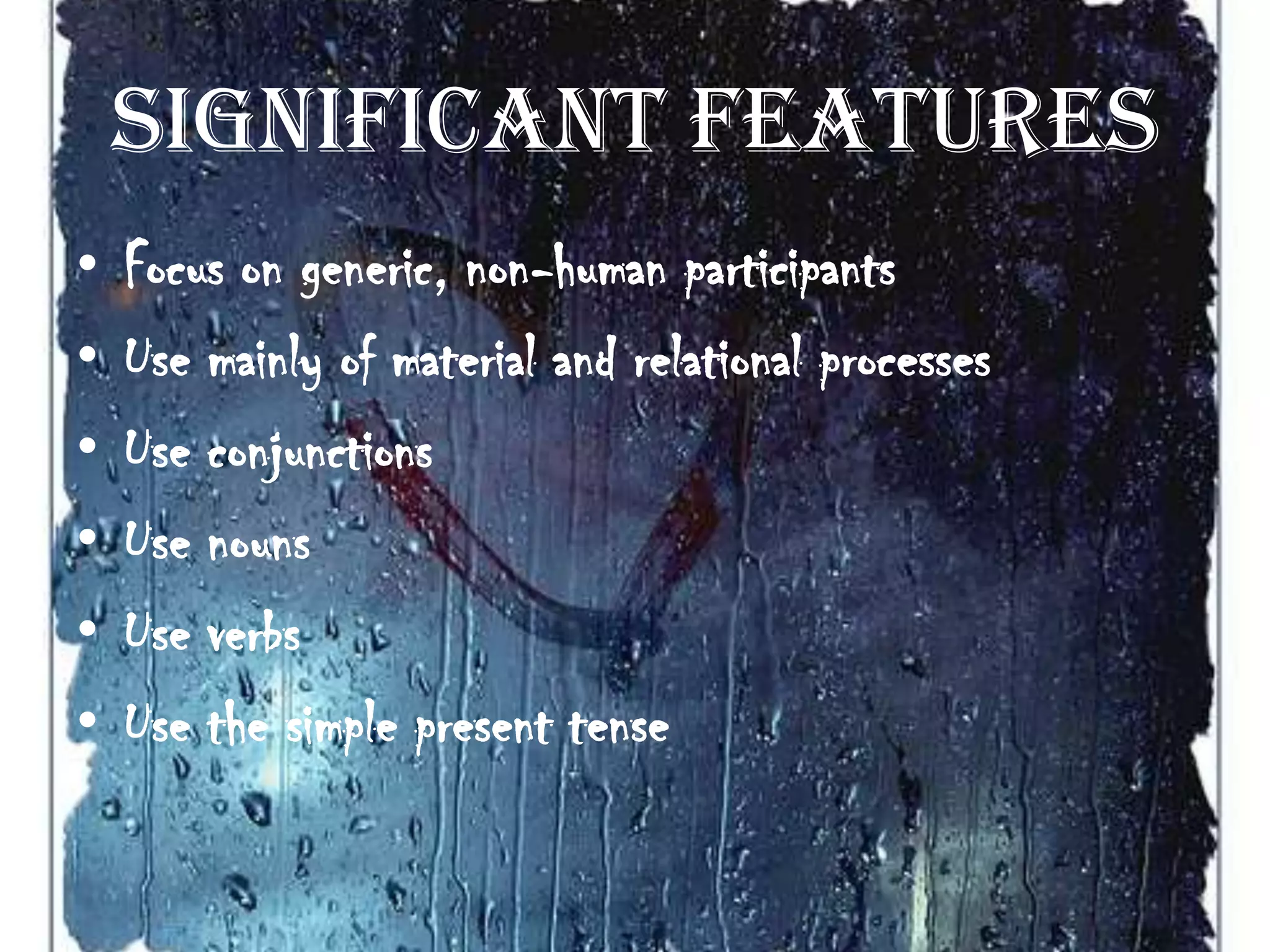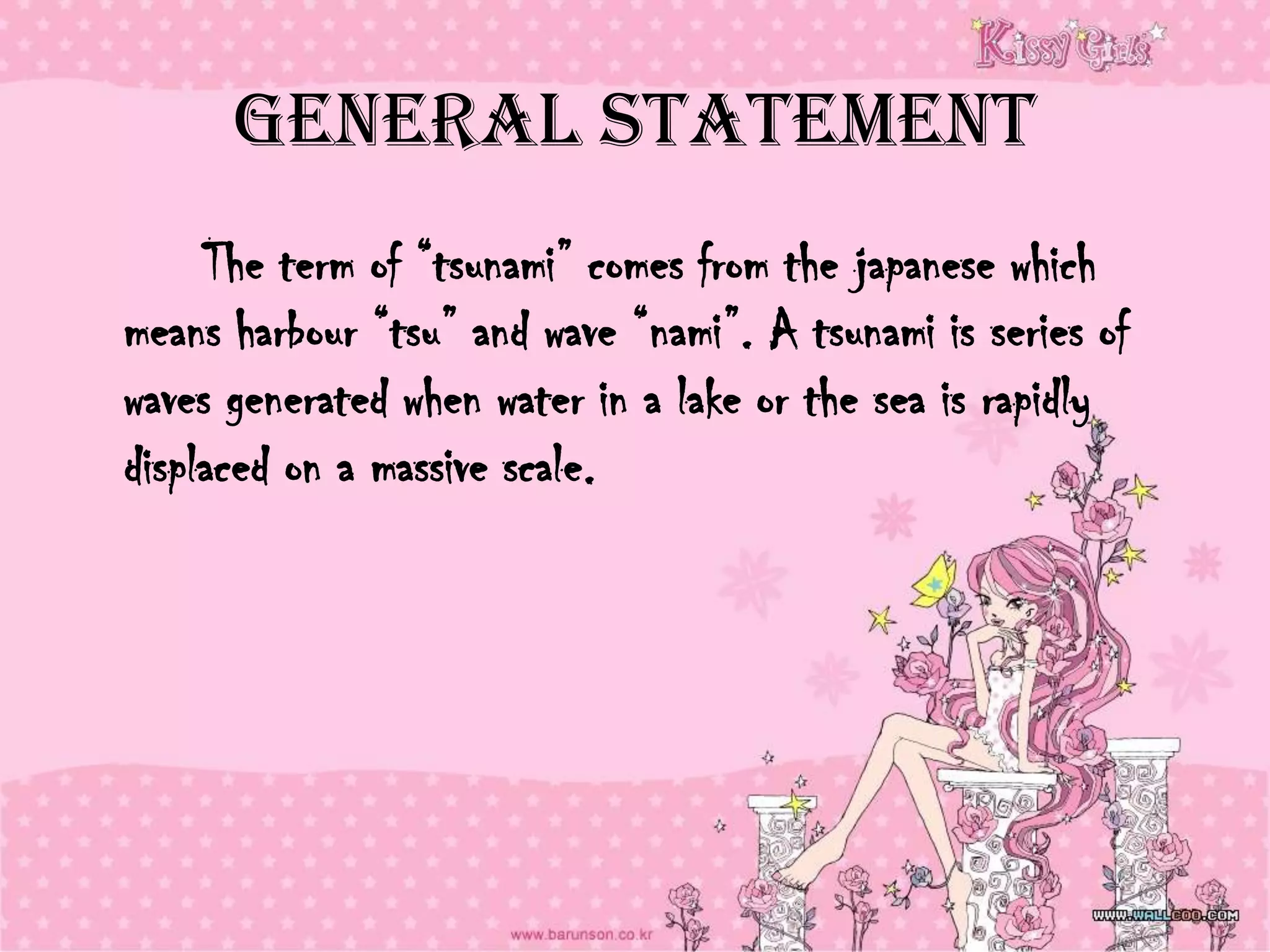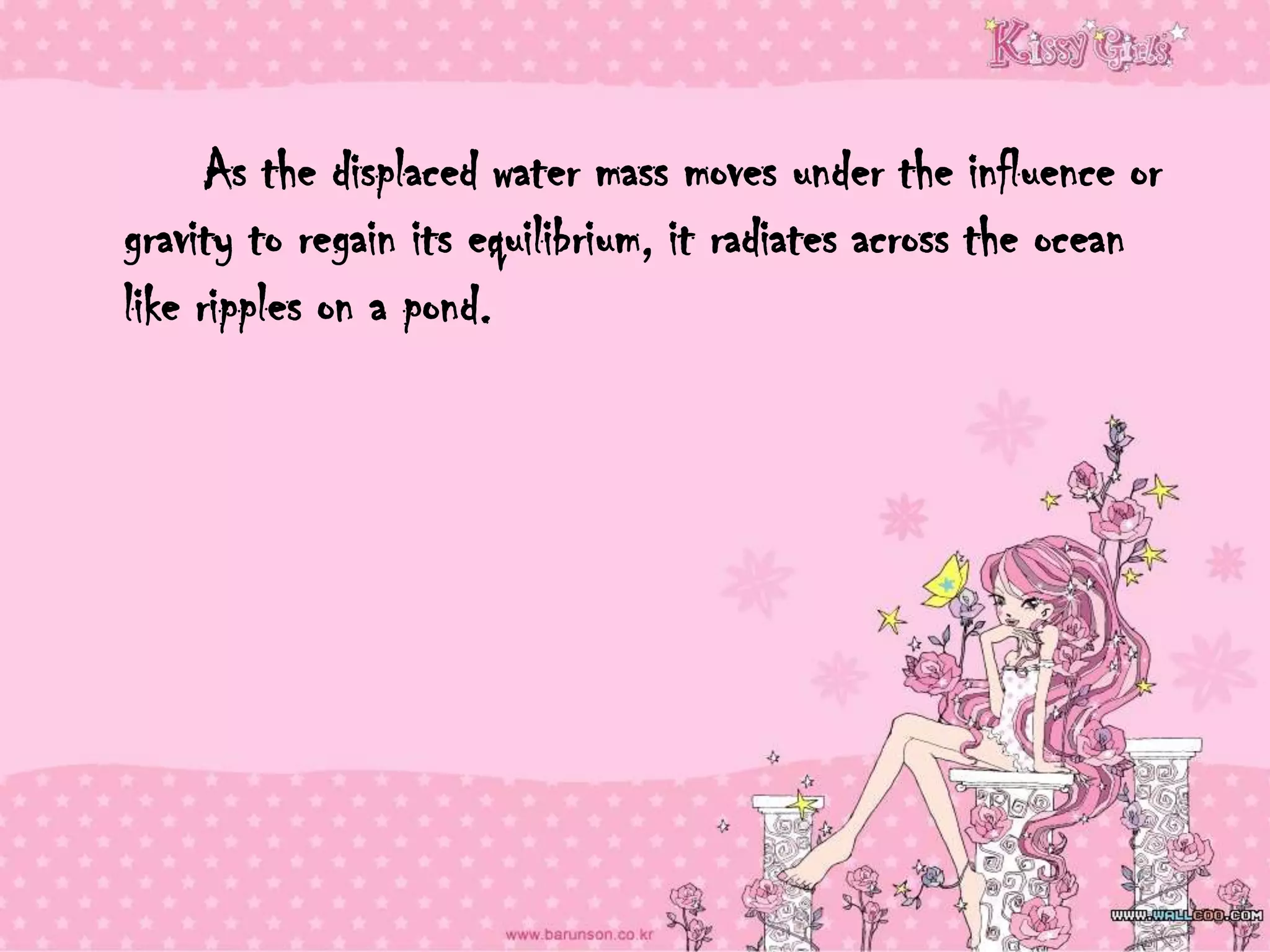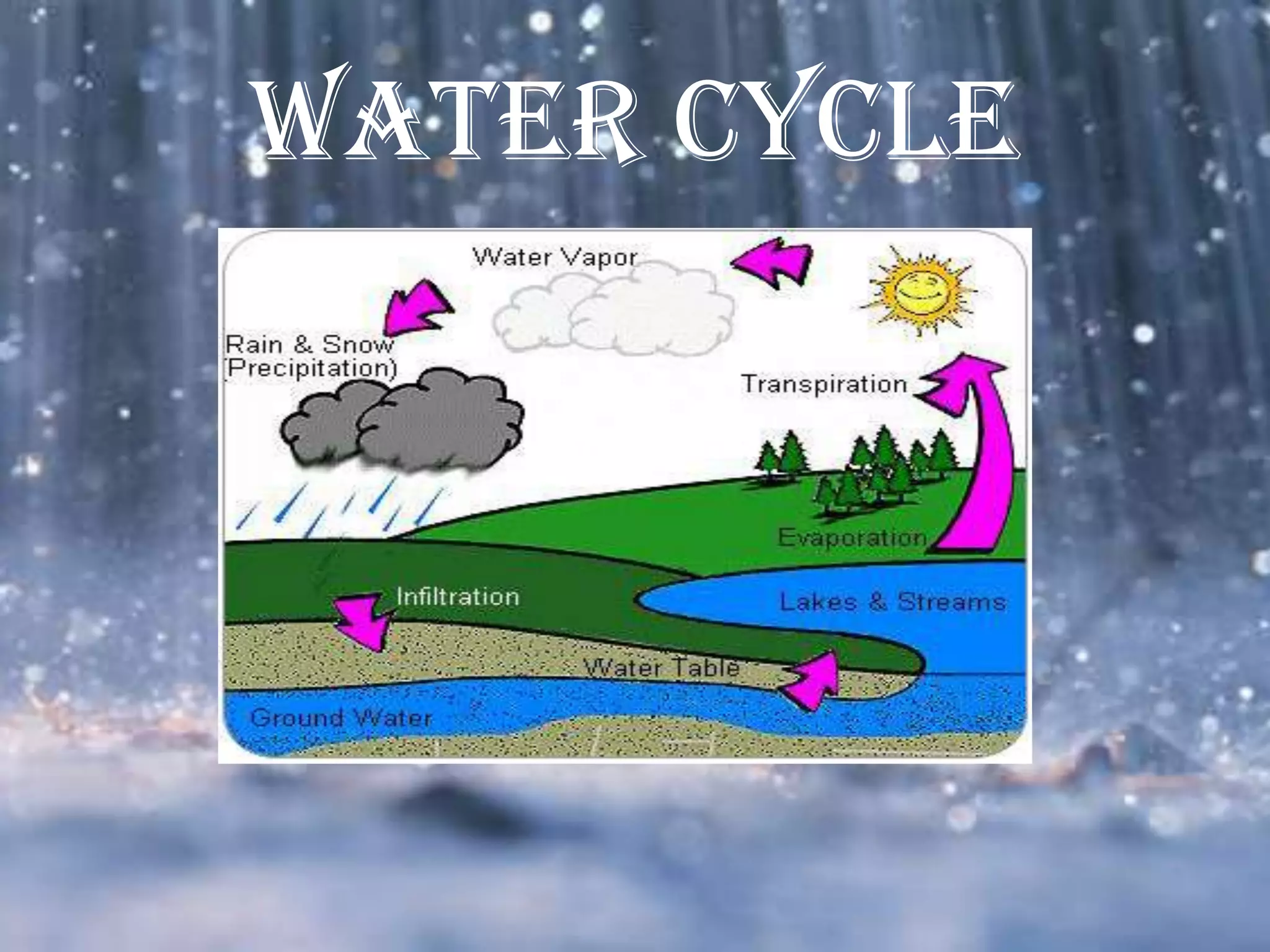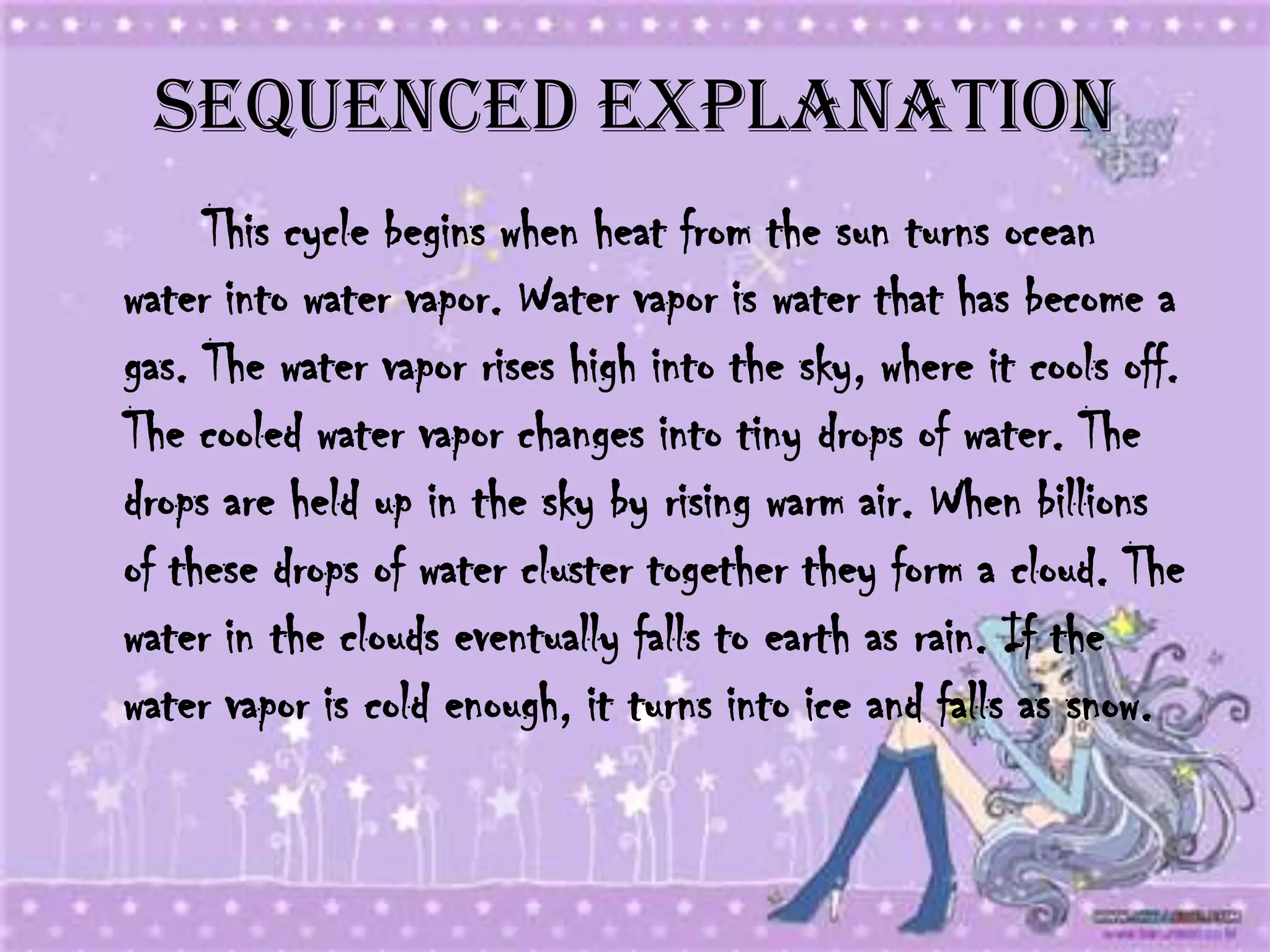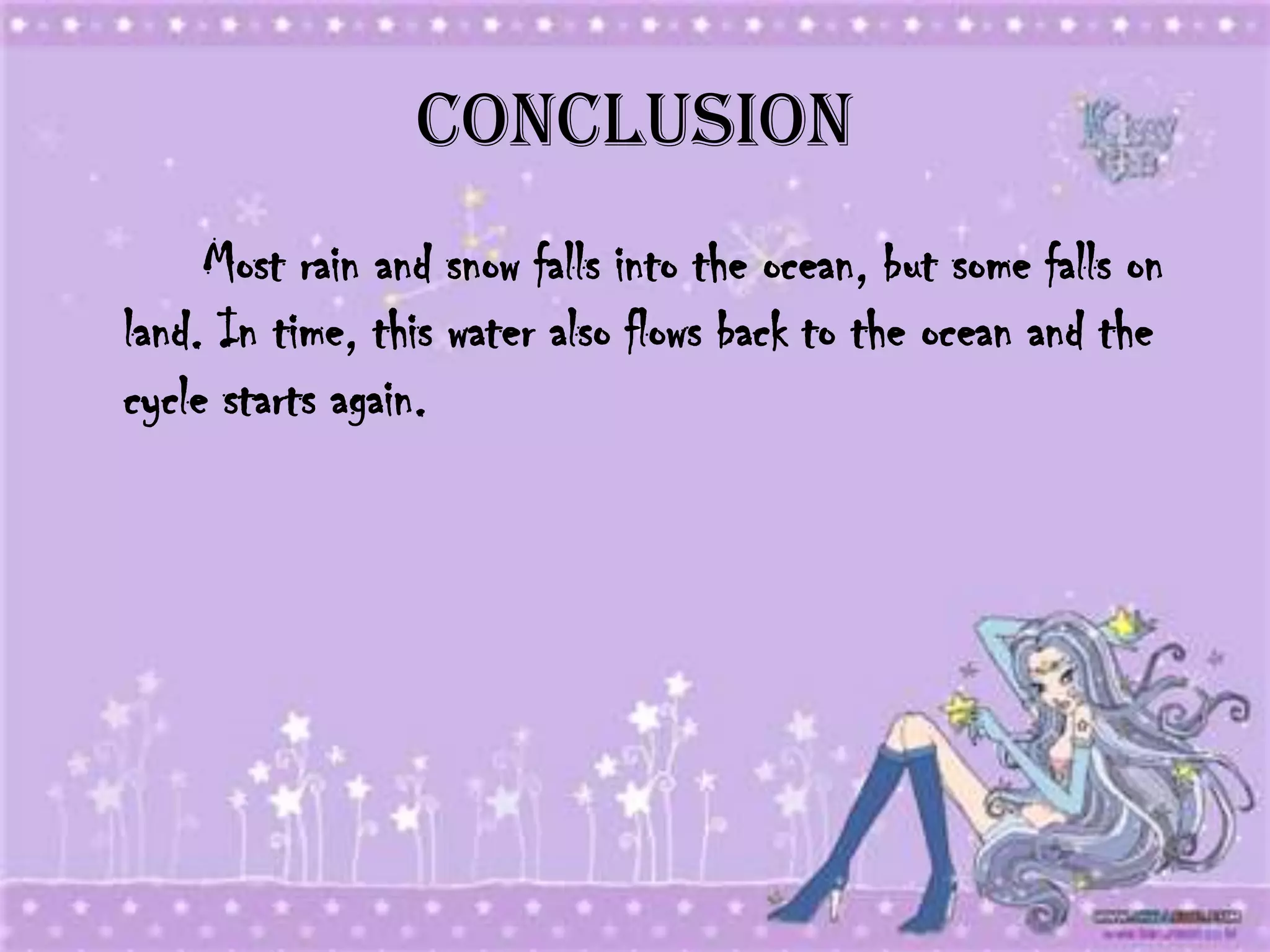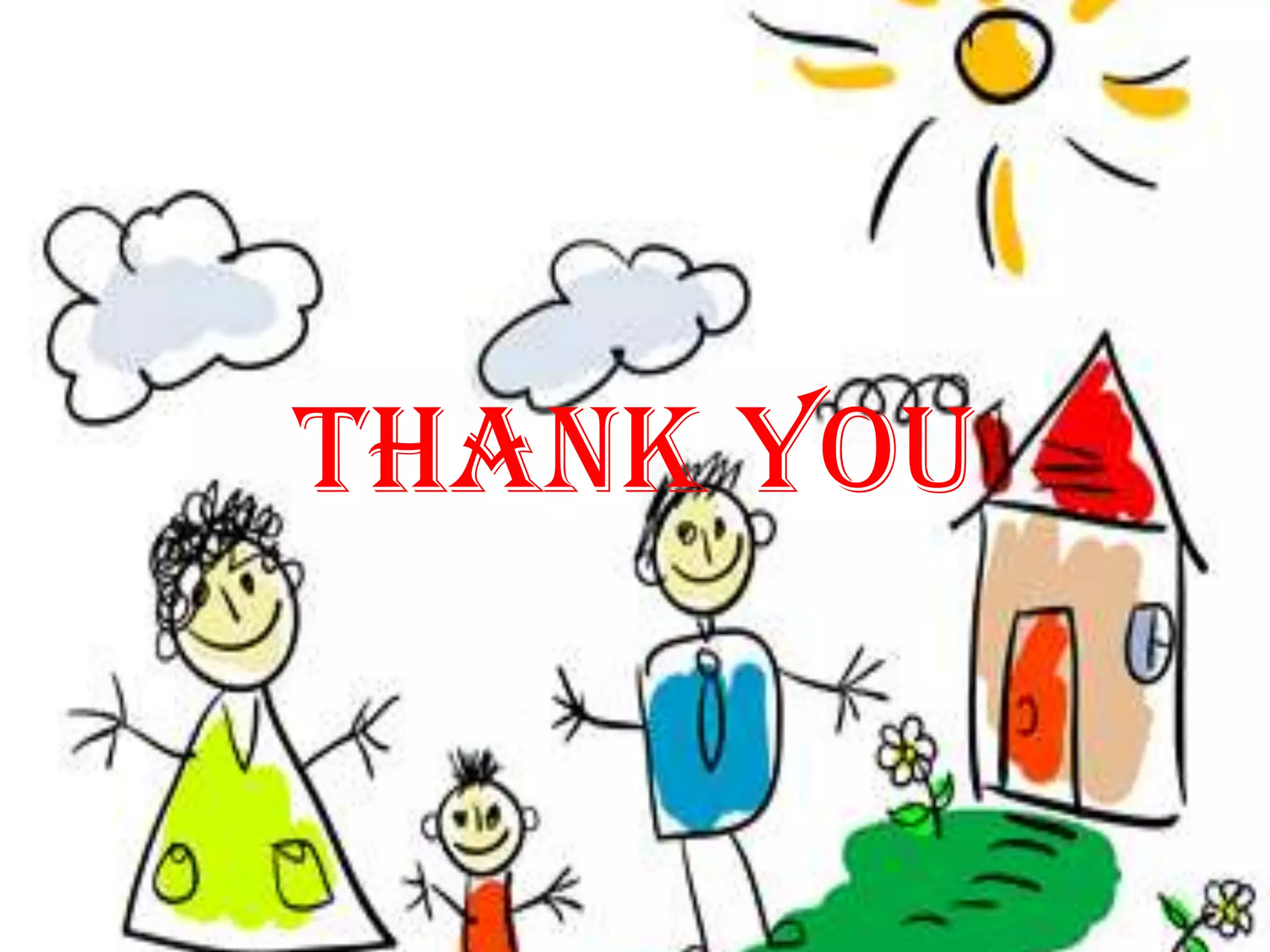The document contains explanations of two natural phenomena:
1) It explains tsunamis as series of waves generated by rapid displacement of large volumes of water, often caused by earthquakes or landslides, and how they radiate across oceans and cause damage upon reaching land.
2) It explains the water cycle as the continuous movement of water on Earth through evaporation, condensation, precipitation, and flow towards oceans, where the cycle repeats as heat from the sun evaporates water again.
